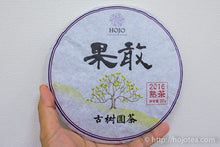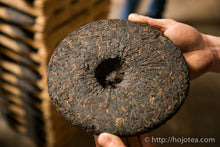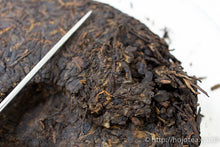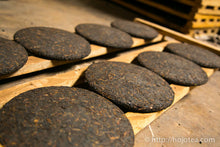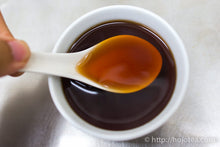
This is a rare, limited-edition ripe pu-erh tea from the Guo Gan area in Myanmar. We acquired the mao-cha (loose tea) from the 2016 harvest and pressed it into 357g cakes. The tea has been stored in Malaysia for several years, aging beautifully and developing an herbal aroma with subtle dried fruit notes, reminiscent of dates. It delivers a bold, full-bodied taste with a deep, lingering aftertaste that endures through multiple infusions.


Tea Collected from Myanmar Near the Yunnan Border
Guo Gan, located in Myanmar along the southwestern Yunnan border, is home to several Chinese minority groups. In this town, many people speak Chinese, and numerous signboards are written in Chinese characters. The Guo Gan autonomous region maintains strong economic ties with Yunnan, with pu-erh tea being a key trade item. Historically, Guo Gan has experienced ongoing civil conflicts due to tribal tensions. In recent years, there have been particularly severe clashes, though in 2016, a temporary ceasefire was established, despite the presence of ongoing conflict zones.

The village of Myanmar that is just a few houses away from the national border to China. In 2013, we visited there before the civil war begun.
Initial Processing in Myanmar, Fermentation in Yunnan
Due to ongoing dangers in the conflict zones, the Chinese immigration authorities currently restrict travel to Guo Gan. Our tea, produced in 2016, was transported from Myanmar to Yunnan by local farmers, who brought raw pu-erh mao-cha (loose tea) via truck. These farmers trained under a Yunnan pu-erh tea manufacturer. Before 2014, when Guo Gan was relatively peaceful, a Yunnan-based tea company had established a factory there, where these farmers learned the craft of pu-erh production from Yunnan tea masters. While no Chinese personnel are currently stationed in Guo Gan, the farmers have retained the skills necessary to process tea, enabling a unique cross-border collaboration for the production of Guo Gan ripe pu-erh tea.
 The tea leaves are first steamed until softened, then placed into cotton bags, where skilled artisans carefully shape them into round tea cakes by hand.
The tea leaves are first steamed until softened, then placed into cotton bags, where skilled artisans carefully shape them into round tea cakes by hand.
 Using traditional stone molds, pressure is applied to form the cakes. Although it's tedious to use the stone molds, this traditional method can assure that the tealeaf is not overly-pressed (like those using hydraulic compressor in big factories), thus tealeaf can remain intact and it's important to offer a clear liquor during brewing.
Using traditional stone molds, pressure is applied to form the cakes. Although it's tedious to use the stone molds, this traditional method can assure that the tealeaf is not overly-pressed (like those using hydraulic compressor in big factories), thus tealeaf can remain intact and it's important to offer a clear liquor during brewing.

The pressed cakes are then placed on wooden racks, allowing the leaves to cool and set in shape.

Once the tea cakes have set, they are removed from the cotton bags and returned to the wooden racks for drying.

The Impact of Oxygen Management on Ripe Pu-erh Tea Flavor
Some people say they dislike ripe pu-erh tea, often due to its reputation for having earthy, musty, or even moldy aromas. This aversion might be our body’s natural response to avoid consuming things it perceives as unsuitable. Ripe pu-erh undergoes over a month of microbial fermentation, during which managing oxygen and moisture levels is critical.
During fermentation, the tea needs to be regularly agitated to maintain enough oxygen. Without this, if moisture levels are too high or the tea is not turned often enough, oxygen becomes limited, allowing anaerobic bacteria (which don’t require oxygen) to dominate. These bacteria often produce unpleasant odors and, in some cases, toxins.
When fermentation is properly managed with the right balance of moisture and oxygen, aerobic bacteria—especially actinomyces—take the lead, giving the tea a pleasant, sweet, and dry-fruity flavor.
In selecting ripe pu-erh tea, we look closely at both the quality of the tea leaves and the fermentation process. Guo Gan ripe pu-erh tea, for instance, is well-fermented and avoids earthy or musty notes. Instead, it offers a mild sweetness, hints of dried fruit, and a touch of woodiness. After tea is aged further, it develops even richer, longer-lasting flavors, enhanced clarity, and a softer mouthfeel.





